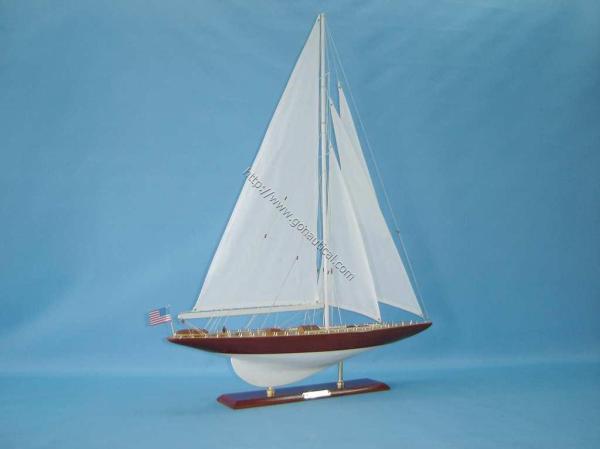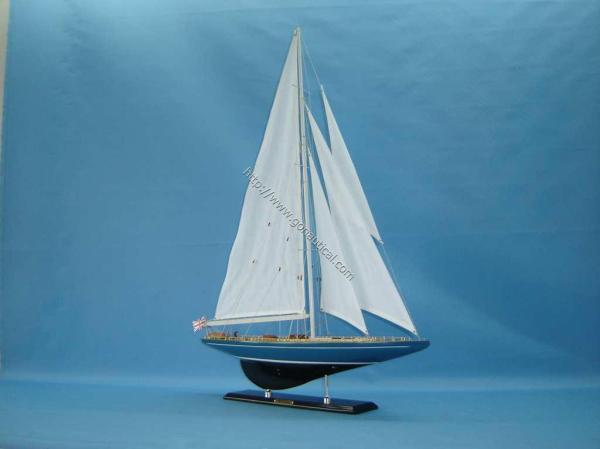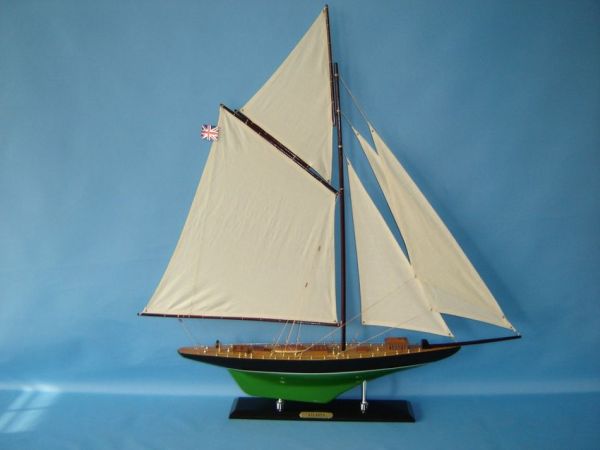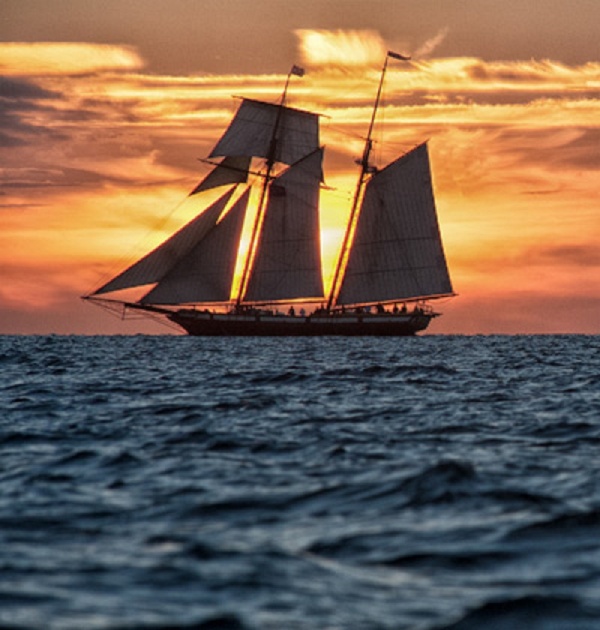
America’s Cup Yacht Model “William Fife”
William Fife III (1857-1944), was the third generation of a family of Scottish yacht designers and builders. Fife was born in a small village which operated the family business from their yard on the beach in the village.
Even though Fife was born in to a legacy of distinguished Scottish Boat builders, he was quick to establish his own reputation as one of the top designers of the world. Dominating competitors, and a master of his trade, he would receive commissions from European royalty and from clients as far as Australia.
Soon enough Fife would also establish a reputation in the yacht racing world, not only designing and building small boats, but a impressive line of cruisers. Fife once said, to have a great yacht, the secret is to be both “fast and bonnie”.
Today, it is thought that there are somewhat less than 100 Fife designs still in existence with perhaps fifty or so still sailing. Of the larger vessels, Altair, Belle Aventure, Cambria, Halloween, the Lady Anne, Moonbeam of Fife, Moonbeam IV, Mariquita and Tuiga grace the classic yacht circuit in Europe. In North America, the Fife ketchs, Adventuress and Sumurun, can be found in the waters of New England.

America’s Cup Yacht Model “Ranger”
The J-class yacht Ranger won the 1937 America’s Cup, defeating 4-0 the Endeavour II of Britain, raced at Newport, Rhode Island. It would be the last time huge J-class yachts would race in the America’s Cup.
Construction
Harold Stirling Vanderbilt funded construction of the Ranger, and it launched on May 11, 1937. It was designed by Starling Burgess and Olin Stephens, and constructed by Bath Iron Works. Stephens would credit Burgess with actually designing the Ranger, but the radical departure from conventional J-class design was more likely attributable to Stephens himself. Geerd Hendel, Burgess’s chief draftsman also had a hand in drawing many of the plans.
Ranger was constructed according to the Universal Rule which determined how large various dimensions of racing yachts, such as sail area and length, could be. Often referred to as the super J, the Ranger received a rating of 76, the maximum allowed while still fitting within Universal Rule constraints.

The Velsheda was designed by Charles Nicholson and built by Camper Nicholson in 1933 for Mr W.L. Stephenson at Gosport. She was Nicholson’s second design for a J Class and Stephenson’s second big yacht.Velsheda was named after Stephenson’s three daughters, Velma, Sheila and Daphne. Between 1933 and 1963, she raced with many infamous yachts including Britannia, Endeavour and Shamrock.
In her second season Velsheda won more than 40 races and achieved an outstanding record of success at Regatta’s from Southend to Dartmouth. Although around 1934 her name was among great racings boats such as “Britannia”, “Endeavour”, and “Shamrock” as well.
During her time, she represented one of the most advanced designs for rigging, sails, deck gear, ropes, and spars. She was equipped with aluminum masts, that were made of bent plates riveted together. New terylene threads made up her sails.
At one point while on charter, she found herself on the beach from a falling tide, but was managed to be recovered safely. Every now and then she would compete in the annual Round the Island Race, though in poor condition, still an amazing site to yacht enthusiasts around the world.

Canada had tried twice to win the America’s Cup but had failed both times. The first in 1876 by the Cuthbert built “Countess of Dufferin”, flying the Roya! Canadian Yacht Club brgee. The second one in1881 by another Cuthbert built yacht “Atlanta”. “Atlanta” flew the burgee of the Bay of Quinte Yacht Club and had the distinction of being the first sloop rigged vessel ever to race for the America’s Cup. Cuthbert was one of the most famous competition yacht builders of the era.
After these two unsuccessful challenges, the deed of gift on the America’s Cup was altered to state that no ±urthe_ challenges from a fresh water club would be accepted. The America’s Cup was now the exclusive property of salt water sai!ors.
The fol!owing year A. J. Fisher presented to the Chicago Yacht Club a challenge cup to be raced for by s!oops. This trophy still bears his name and is the oldest international cup on the Great Lakes.
The first race for the Fisher Cup was held on July 8, 1882 and was won by Chicago Yacht Club’s sloop “Cora” and she was successfu! in defending it in a second race in September of that same year.
The following year, 1883, an International Regatta was sponsored by the Chicago Yacht Club. The Fisher Cup and $500.00 was to be the prize. In a race held on August 4th, the 65’ cutter “Ai!een” and “Atlanta”, the defeated challenger for the America’s Cup, represented Canada. “Cora”, the defender of the cup, and “Wasp” sailed for Chicago and “Cora” won, retaining the Fisher Cup.
Though the deed of gift stated that another challenge could not be accepted for thirty days, Captain Cuthbert asked Chicago to waive the time limit and allow another race almost immediately. They agreed and, on August 8th, a race was sailed around a twelve mile triangle. This time “Atlanta” was the winner and she brought the Fisher Cup to the Bay of Qunite Yacht Club and to Lake Ontario.
In the winter of 1883-84, Cuthbert designed and built a sloop for John Bell, who named it “Norah” after his daughter. The “Norah” was built a!ong the lines of “Atlanta” and, on September 17, 1884, “Norah” lifted the Fisher Cup.
















